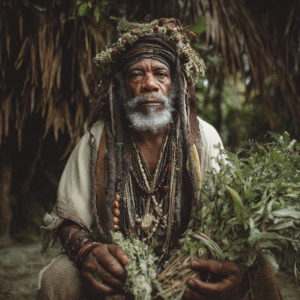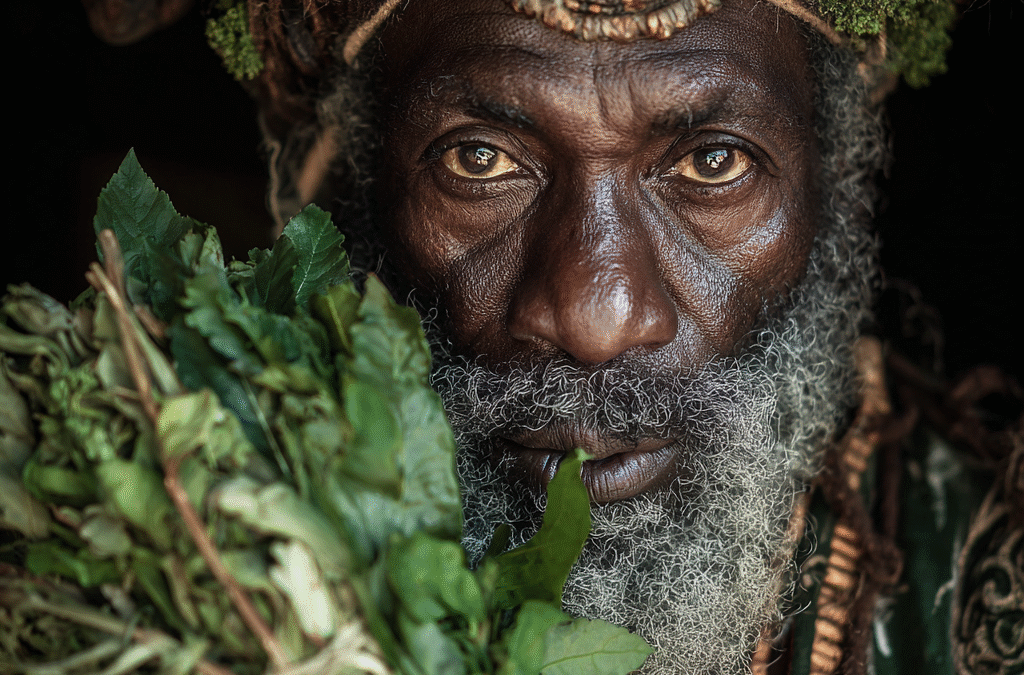The Caribbean, a vibrant mosaic of islands and cultures, has a rich tradition of herbal medicine that reflects its diverse history. Rooted in the knowledge of Indigenous peoples, African, European, and Asian influences, Caribbean traditional medicine, often called “bush medicine,” blends practical herbal remedies with spiritual practices. This blog explores the foundations of Caribbean healing traditions, key herbs used, and the cultural wisdom that continues to shape this ancestral knowledge.
Foundations of Caribbean Traditional Medicine
Caribbean traditional medicine emerged from a fusion of cultural practices brought by Indigenous groups like the Arawak and Kalinago, enslaved Africans, European settlers, and indentured laborers from India and Asia. This blending created a unique ethnomedical system, often centered on the concept of “hot” and “cold” balance, similar to humoral medicine. Healers, known as herbalists, shamans, or “obeah” practitioners, combined plant-based remedies with rituals, spiritual beliefs, and oral traditions to treat ailments ranging from colds to spiritual imbalances.
The TRAMIL (Program of Applied Research to Popular Medicine in the Caribbean) initiative has documented these practices since 1982, emphasizing the importance of preserving this knowledge amid modernization and the dominance of Western medicine. Despite challenges like colonialism and urbanization, rural communities in places like Trinidad, Barbados, and Guadeloupe continue to rely on bush medicine for primary healthcare, especially where access to conventional medicine is limited.

Key Herbs in Caribbean Traditional Medicine
The Caribbean’s biodiversity, with islands like Guadeloupe hosting a wealth of unique flora, provides a rich pharmacopeia. Below are some prominent herbs used in traditional remedies, often prepared as teas, poultices, or baths:
Culantro/Recao (Eryngium foetidum): A pungent herb similar to cilantro, culantro is a staple in Caribbean cuisine and medicine. It is used in teas or sofrito to aid digestion, reduce inflammation, and treat colds. Its strong aroma is believed to have spiritual cleansing properties.
Cerasee/Cundeamor (Momordica charantia): This bitter vine grows wild across the Caribbean and is used to treat diabetes, hypertension, and digestive issues. Cerasee tea is a common “cooling” remedy to cleanse the blood and detoxify the body.
Aloe Vera: Known as the “miracle plant,” aloe vera gel is applied to soothe burns, cuts, and sunburns. It is also consumed to aid digestion and boost immunity, a practice shared across many Caribbean islands.
Fever Grass (Cymbopogon citratus): Also called lemongrass, this herb is brewed into tea to reduce fevers, ease stomachaches, and relieve nausea. Its calming properties make it a popular remedy for stress and insomnia.
Soursop (Annona muricata): The leaves of the soursop tree are used in teas to treat insomnia, high blood pressure, and anxiety. Recent studies suggest potential anticancer properties, though traditional uses focus on its calming effects.
Sea Moss (Chondrus crispus): A nutrient-rich seaweed, sea moss is consumed in smoothies or gels as a general tonic to boost energy, support digestion, and provide essential minerals. Its mucilaginous nature soothes stomach issues.
Periwinkle (Catharanthus roseus): Used traditionally to manage diabetes, periwinkle tea or tinctures also treat eye infections, sore throats, and insect bites. Its vibrant flowers are a common sight in Caribbean gardens.
Calabash (Crescentia cujete): The fruit pulp is used as a cough remedy and to treat asthma, while the bark addresses earaches and fevers. Roasted calabash is consumed to prevent cramps or induce childbirth.
These herbs are often harvested with intention, following traditional protocols that respect the plant’s life cycle and the environment. For example, harvesting is done with gratitude to ensure sustainability, a practice rooted in Indigenous and African traditions.
Spiritual and Cultural Practices
Caribbean bush medicine is deeply spiritual, often involving rituals to ward off evil spirits or restore balance. For instance, herbs like tropical sage or oregano are used in Curacao to improve digestion and protect against negative energies. Practices like “bush baths” or smudging with herbs are common for cleansing both physically and spiritually. The concept of “cooling” the body, prevalent in Trinidad, uses herbs like cerasee to counteract “hot” conditions like infections or inflammation.
Healers often learned through oral traditions, with knowledge passed down from elders, as seen in Puerto Rico where families share recipes like mint and honey tea for sleep. In rural Barbados, traditional knowledge remains strong, with many acquiring herbal wisdom from family members rather than formal education. However, colonial bans on practices like those of the Arawak and African healers forced much of this knowledge underground, preserved in secret by resilient communities.
Challenges and Modern Relevance
The Caribbean’s herbal traditions face threats from urbanization, loss of oral knowledge, and the marginalization of bush medicine by Western medical systems. Studies in Barbados highlight barriers like the perceived superiority of pharmaceuticals and concerns about drug-herb interactions. Yet, there is growing interest in validating these remedies through science. For example, research in Trinidad has identified plants like Stachytarpheta jamaicensis for their antimicrobial properties, supporting their traditional use for infections.
The TRAMIL program and ethnobotanical studies in places like Guadeloupe continue to document and validate these practices, ensuring their preservation. Additionally, modern herbalists like Dinah Veeris in Curacao and Aleya Fraser in Trinidad are revitalizing this knowledge through gardens, books, and community education, blending ancestral wisdom with scientific inquiry.
Conclusion
Caribbean traditional medicine is a vibrant tapestry of Indigenous, African, European, and Asian influences, woven together by a deep respect for nature and community. Its herbs, from cerasee to fever grass, offer practical remedies while embodying centuries of cultural resilience. As modern science begins to validate these ancient practices, there is hope for their integration into broader healthcare systems, preserving a legacy that has sustained Caribbean people for generations.
For further exploration, consider reading Caribbean Herbs and Medicinal Plants and Their Uses by Kevin Harris or Caribbean Herbalism by Aleya Fraser, or explore the TRAMIL program’s resources for detailed ethnobotanical insights.
